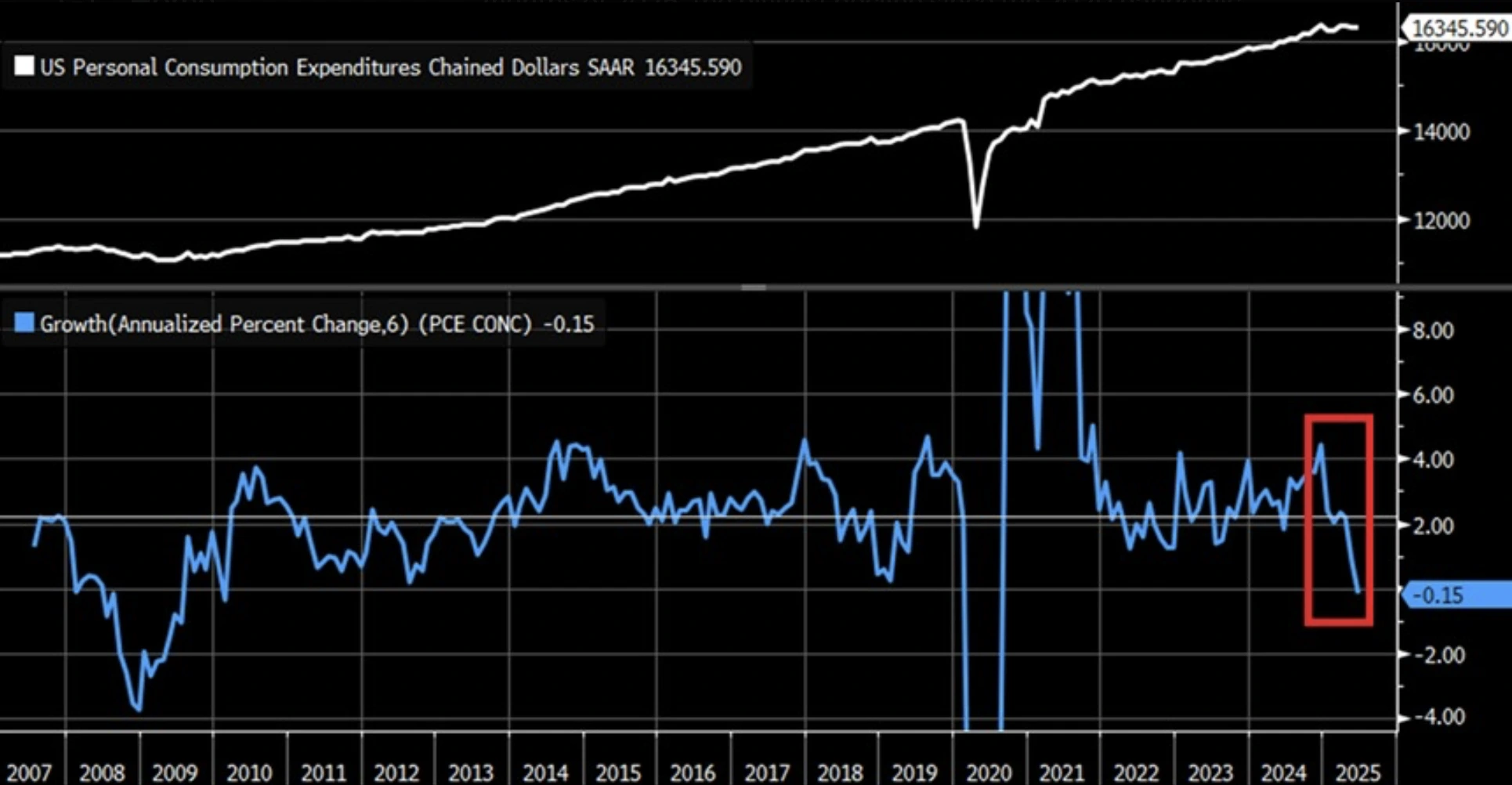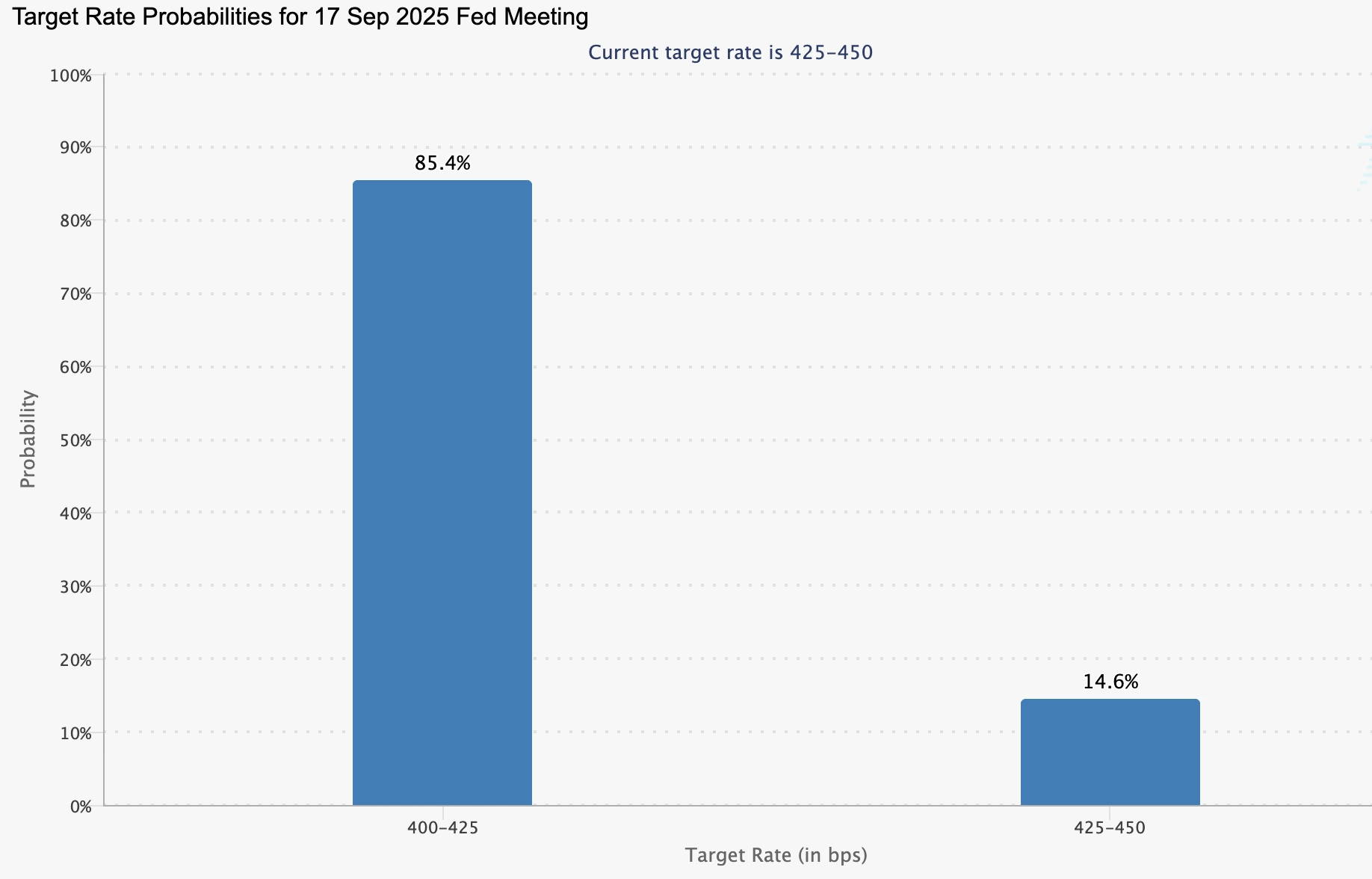Will US consumer spending trends drive EUR/USD in late 2025?
Will US consumer spending trends drive EUR/USD in late 2025?
Will US consumer spending trends drive EUR/USD in late 2025?

U.S. consumer behaviour is undergoing a significant transformation, with inflation-adjusted spending declining for the first time since the pandemic. Personal consumption expenditures fell by 0.15% in the first half of 2025, while major retailers report weakening demand across all demographic segments.
This notable shift in household spending coincides with EUR/USD consolidation around 1.1570, as currency traders carefully monitor for the next macroeconomic catalyst. Financial analysts suggest that increasing signs of consumer frugality – including smaller purchase volumes, greater coupon redemption, and migration to value brands – may indicate broader economic challenges that could influence Federal Reserve policy decisions and subsequently impact the currency pair's trajectory.
Key EUR/USD drivers: U.S. spending, Fed policy, and market sentiment
- American consumers are reducing expenditure, even on essential items, as inflation and economic uncertainty persist
- Financial experts indicate this behavioural shift could significantly influence Federal Reserve policy direction and potentially weaken the dollar
- EUR/USD is currently consolidating around 1.1581, with potential for a directional breakout as policy and market sentiment evolve
Why a US consumer pullback may signal broader economic weakness
Retail statistics, corporate earnings reports, and market observations consistently highlight an emerging trend: the post-pandemic spending enthusiasm is fading rapidly.
This cautious approach spans all consumer segments – from university students in Michigan to affluent households in California – with a clear preference for economising. Discount-seeking, promotional hunting, and switching to more affordable alternatives have become increasingly common consumer strategies.
Leading consumer goods corporations are experiencing this shift firsthand. Mondelez, which produces Oreo cookies and Ritz crackers, has reported declining American sales despite robust global performance. Chipotle has witnessed reduced premium menu orders, while Domino's Pizza has introduced aggressive multi-purchase promotions to maintain customer traffic.
Procter & Gamble, parent company of household brands like Tide and Pantene, has observed decreasing demand for everyday necessities. Even speciality providers like Invisalign report customers opting for more economical traditional orthodontic solutions.
According to Wall Street Journal analysis, these patterns reflect a deeper, more strategic adjustment in consumer behaviour – what market watchers characterise as a structural response to sustained inflation and financial uncertainty, rather than temporary belt-tightening.
Research from Empower, an American retirement asset manager, revealed in their June survey that over half of U.S. adults now dedicate approximately four hours daily to financial management concerns – equivalent to part-time employment focused entirely on maximising financial resources.
Will Fed rate cuts in response to weak spending push EUR/USD higher?
As of 6 August, the EUR/USD pair trades within a narrow band around 1.1581. Market participants appear reluctant to establish new positions while awaiting forthcoming U.S. inflation data and potential Federal Reserve policy adjustments. However, meaningful indicators may already be evident in American retail purchasing patterns.
Historically, during periods of economic uncertainty, the U.S. dollar typically strengthens as investors seek safer assets. Market analysts suggest the recent decline in personal consumption expenditures – down 0.15% in the first half of 2025, representing the most significant contraction since the pandemic – could potentially signal early recessionary conditions.

This perspective gains support from disappointing July economic indicators showing stagnant services sector growth alongside rising input costs. In the immediate term, such developments typically bolster the dollar as markets adopt defensive positioning. However, this dynamic might reverse if the Federal Reserve interprets consumer retrenchment as justification for policy adjustment.
According to CME FedWatch data, market participants currently price in greater than 85% probability of a September rate reduction, with additional cuts anticipated before year-end.

If these expectations materialise, many currency strategists believe this would diminish U.S. asset attractiveness and create downward pressure on the dollar, potentially driving EUR/USD toward the 1.1590–1.1800 range.
Meanwhile, Europe faces its own challenges. The Eurozone, particularly Germany, depends heavily on American export markets. Reduced U.S. consumer demand could negatively impact Eurozone growth prospects and consequently pressure the Euro. However, analysts note that should the European Central Bank maintain current rates while the Fed adopts accommodative policy, the narrowing interest rate differential might support the Euro, partially offsetting trade-related weaknesses.
EUR/USD technical analysis
At present, the pair remains contained within a tight trading range, with selling pressure evident on daily timeframe charts. Volume indicators reveal predominant buying pressure over recent sessions, though sellers have demonstrated strong counteraction during the past two trading days. This pattern suggests either continued consolidation or potential downward movement. Should downward momentum materialise, prices may find support at the 1.1529 and 1.1392 levels. Conversely, upward price movement could encounter resistance at the 1.1770 threshold.

The U.S. Dollar Index (DXY) currently trades around 98.80, consolidating following a sharp decline triggered by last week's disappointing employment report. Despite this, market participants remain cautious, awaiting upcoming inflation data releases and President Trump's announcements regarding Federal Reserve leadership appointments.
Can consumer habits predict the next EUR/USD breakout?
Developments in retail purchasing patterns may provide more valuable forward-looking insights than traditional economic metrics. Kroger, a major American supermarket chain, reports increasing store visits accompanied by shrinking basket sizes. Consumers are purchasing fewer items per shopping trip and increasingly selecting store brands over premium alternatives. These individual decisions – multiplied across millions of daily transactions – are reshaping the broader economic landscape.
Market analysts suggest this pattern of cautious consumption could indicate further demand weakness ahead. If household spending continues to contract, the Federal Reserve may feel compelled to implement more aggressive policy responses. Such actions would likely have immediate implications for currency markets.
Implications to note
EUR/USD may continue trading within its established range short-term, though analysts caution that consumer spending data could serve as an unexpected catalyst for a directional breakout. A more pronounced reduction in U.S. consumption – particularly if it prompts monetary policy easing – could weaken the dollar and drive the pair higher. Conversely, if global recession concerns intensify, EUR/USD might trend lower as both currencies face challenging conditions.
For the present, traders might benefit from focusing less on traditional economic indicators and more on consumer spending patterns. The economic narrative is increasingly being written through everyday purchasing decisions.
Start tracking the next movements of the EUR/USD with a Deriv MT5 account today.
The performance figures quoted are not a guarantee of future performance. This content is not intended for EU residents.















